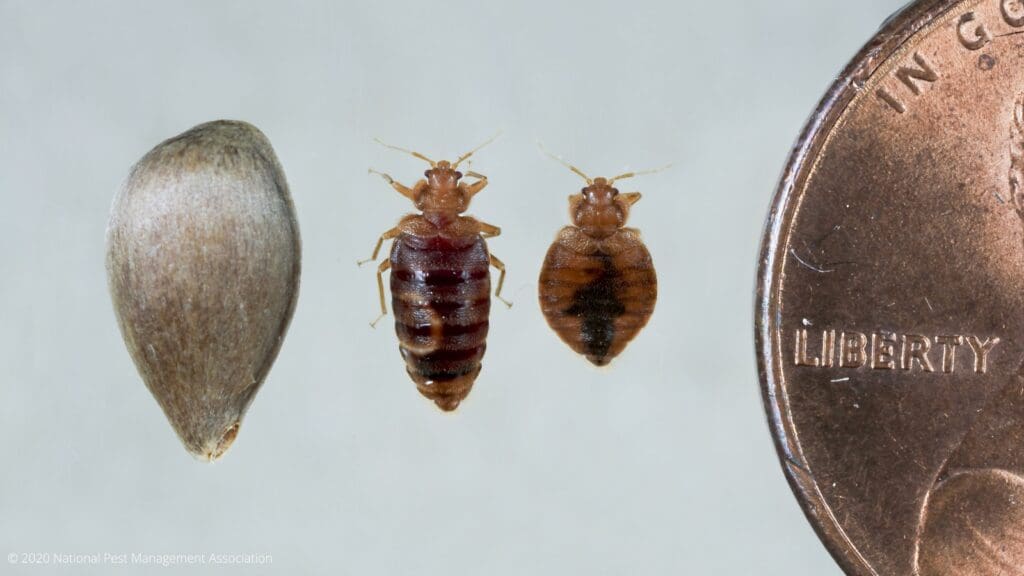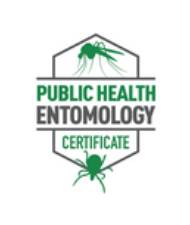DIY Bed Bug Control
DIY Bed Bug Control in Kansas City

DIY Bed Bug Control: Understanding Bed Bugs and Effective Management Strategies
Bed bugs are a persistent and frustrating pest that can disrupt the comfort of your home. Mastering DIY Bed Bug Control requires understanding what bed bugs are, their life cycle, how they invade homes, and the best strategies for managing them. While DIY methods can be adequate for small infestations, professional pest management often provides a more reliable and cost-effective solution for severe cases. In this blog post, we’ll explore these topics in detail to empower you with the knowledge to tackle bed bugs effectively.
What Are Bed Bugs? Morphology and Physiology
Bed bugs (Cimex lectularius) are small, parasitic insects that feed exclusively on blood, primarily human blood, making them a notorious household pest. Their morphology and physiology are uniquely adapted for survival:
- Appearance: Adult bed bugs are reddish-brown, flat, and oval-shaped, about 4-5 mm long (the size of an apple seed). Their flattened bodies allow them to hide in narrow cracks and crevices. After feeding, they swell slightly and turn a darker red.
- Physiology: Bed bugs lack wings and cannot fly, but they are adept crawlers. They have piercing-sucking mouthparts designed to penetrate skin and draw blood. They also release an anesthetic in their saliva to avoid detection during feeding, which typically lasts 5-10 minutes.
- Sensory Adaptations: Bed bugs are attracted to body heat, carbon dioxide, and certain chemicals emitted by humans, helping them locate hosts, especially at night when they are most active.
Bed Bug Life Cycle
Understanding the bed bug life cycle is critical for effective DIY Bed Bug Control, as targeting all stages ensures complete eradication:
- Egg Stage: Females lay 1-5 tiny, white eggs (about 1 mm long) daily, often in hidden areas like mattress seams or furniture cracks. A female can lay 200-500 eggs in her lifetime. Eggs hatch in 6-10 days under optimal conditions (70-80°F).
- Nymph Stages: After hatching, bed bugs go through five nymphal stages, each requiring a blood meal to molt to the next stage. Nymphs are smaller and lighter in color than adults, but they are still capable of feeding. This phase lasts 5-8 weeks, depending on temperature and food availability.
- Adult Stage: Adults can live 6-12 months, sometimes longer, without feeding, with some individuals surviving up to a year in cooler conditions. Their resilience makes early intervention crucial.
How Do Bed Bugs Get Into Your Home?
Bed bugs are expert hitchhikers, spreading through human activity rather than natural migration. Common ways they invade homes include:
- Travel: Bed bugs often latch onto luggage, clothing, or bags in infested hotels, public transportation, or vacation rentals.
- Secondhand Items: Used furniture, mattresses, or clothing can harbor bed bugs or their eggs, introducing them to your home.
- Visitors: Guests unknowingly carrying bed bugs on their belongings can bring them into your space.
- Shared Spaces: In multi-unit housing, such as apartments or dorms. Bed bugs can crawl through walls, electrical outlets, or shared laundry facilities from infested units.
- Public Places: Movie theaters, libraries, or offices with upholstered seating can be bed bug hotspots.
Once inside, bed bugs hide in all sorts of places like mattresses, box springs, bed frames, headboards, baseboards, or even electronics, making them hard to detect until populations grow.
DIY Bed Bug Control: Steps to Take
For small or early infestations, DIY Bed Bug Control can be effective if done thoroughly. Here’s a step-by-step guide to managing bed bugs:
- Identify the Infestation:
- Look for signs such as small blood stains or dark fecal spots on bedding, shed skins, or live bugs in the mattress seams.
- Use a flashlight to inspect cracks, crevices, and other areas of concern, such as furniture. Bed bug traps or interceptors, placed under the bed legs, can confirm their presence.
- Clean and Declutter:
- Wash all bedding, linens, and clothing in hot water (at least 120°F) and dry on high heat for 30 minutes to kill bed bugs and eggs.
- Vacuum mattresses, furniture, and floors thoroughly, paying particular attention to seams and crevices. Seal and dispose of the vacuum bag immediately to prevent re-infestation.
- Reduce clutter to eliminate hiding spots.
- Use DIY Treatments:
- Heat: Encase infested items (such as clothing or books) in a portable heat chamber to kill bed bugs. Temperatures above 120°F for several hours are lethal.
- Cold: For non-washable items, seal them in plastic and freeze at 0°F for at least 4 days.
- Diatomaceous Earth: Apply food-grade diatomaceous earth in cracks and crevices. This powder dehydrates bed bugs, but it requires several days to take effect. Wear a mask to avoid inhaling dust.
- Encasements: Use bed bug-proof mattress and box spring encasements to trap bugs and prevent new infestations.
- Monitor and Repeat:
- Place bed bug interceptors under furniture legs to trap stragglers.
- Repeat cleaning and treatments weekly for at least a month to ensure all eggs have hatched and been eliminated.
- Prevent Re-Infestation:
- Inspect secondhand items before bringing them home.
- Use luggage encasements when traveling and wash clothes immediately upon return.
- Seal cracks and crevices in walls or furniture to limit hiding spots.
While DIY Bed Bug Control can work for minor infestations, it requires diligence, patience, and repeated efforts. Missing even a few eggs can lead to a resurgence.
The Importance of Professional Pest Management
For moderate to severe infestations, professional pest management is often the better option due to its effectiveness, professionalism, and long-term cost savings. Here’s why:
Expertise and Thoroughness:
- Licensed pest management professionals are trained to identify bed bug hiding spots that DIYers might miss, such as inside walls or electrical outlets.
- They utilize advanced tools, such as canine detection (dogs trained to sniff out bed bugs), for precise identification, ensuring that no area is overlooked.
Comprehensive Treatment Options:
- Professionals employ integrated pest management (IPM), which combines product treatments (e.g., residual insecticides), heat treatments (whole-room heating to 130°F or higher), and physical methods such as steam or cryonite (freezing).
- Fumigation, using Vikane gas, is the most effective method for eliminating bed bug infestations in a single visit. Finding a company can be challenging in your area due to the licensing requirements needed to perform a fumigation treatment.
- These methods are more effective than DIY solutions and can eliminate all life stages in one or two visits, compared to the weeks of DIY efforts required.
Safety:
- Professionals use approved products and apply them effectively, minimizing risks to pets, children, or residents. DIYers may misuse over-the-counter products, leading to health hazards or ineffective results.
Cost Considerations:
- DIY Costs: While DIY methods, such as using diatomaceous earth ($10-$20) or encasements ($30-$50), may seem affordable, repeated purchases of products, traps, and cleaning supplies can add up. Additionally, failed DIY attempts may prolong the infestation, leading to increased stress and potential property damage.
- Professional Costs: Professional treatments typically range from $600 to $5,000, depending on the size of the infestation, the chosen method, and the layout of the home. However, this upfront cost often saves money by resolving the problem quickly and preventing recurrence.
Time and Stress:
- DIY Bed Bug Control is labor-intensive, requiring hours of cleaning, inspecting, and monitoring. For busy homeowners, this can be overwhelming.
- Professionals handle the entire process, from inspection to follow-up, allowing you to focus on your daily life without the emotional toll of battling bed bugs.
- Long-Term Prevention:
- Pest control experts offer guidance on preventing future infestations, such as sealing entry points or scheduling regular inspections, which DIYers may overlook.
DIY vs. Professional: When to Choose What
- DIY Bed Bug Control: Best for early detection or small infestations (e.g., a few bugs on a single piece of furniture). It’s cost-effective if you’re willing to invest time and effort and follow through consistently.
- Professional Pest Management: Recommended for larger infestations, multi-room involvement, or if DIY efforts fail after 2-3 weeks. It’s also ideal for renters or apartment dwellers, as bed bugs can spread between units, requiring coordinated treatment.
Conclusion
Bed bugs are resilient pests with a complex life cycle. Making DIY Bed Bug Control a viable but challenging option for small infestations. By understanding their biology, identifying entry points, and using targeted DIY methods. Methods like heat, encasements, and thorough cleaning can help you manage minor issues effectively. However, for severe infestations, professional pest management offers unmatched expertise, safety, and efficiency, often proving more cost-effective in the long run. Whether you choose DIY or professional help, acting quickly and thoroughly is key to reclaiming your home from bed bugs. If you’re unsure about the extent of your infestation, consult a pest management expert to assess the situation and guide you toward the best solution.
For more information on professional services, please visit our website at zipzappestcontrol.com or contact our office directly at 816-407-7378. Stay vigilant, and take control of your home today!

Jeffery Preece, BCE, PHE
Jeffery Preece is the Owner/Technical Director of ZipZap Termite & Pest Control



